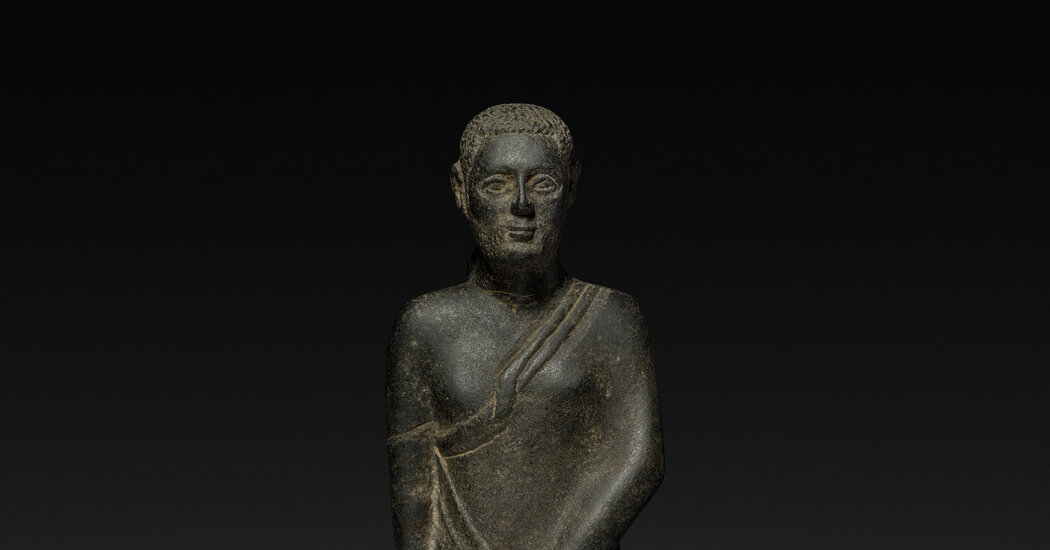
While excavating an ancient Greek palace in eastern Libya in the 1930s, an archaeologist unearthed a large terracotta vase, looked inside, and noticed something unexpected: a 2,200-year-old sculpture of a bearded man carved from basalt, a dark volcanic stone.
The half-meter-tall antiquity, most likely carved during the Ptolemaic dynasty of ancient Egypt, was a rare find. Known as a male figure walking forward, it is one of only 33 similar statues known, Egyptologists say.
But it wasn't long before thieves took possession of the bearded figure and took her on an illicit odyssey that landed her, in 1991, at the Cleveland Museum of Art.
On Wednesday, after curators examined extensive evidence of the object's theft from Libya, including photos displayed in the 1940s at a small museum near the site of the discovery, the museum agreed to transfer ownership to Libyan officials.
“When we face a situation like this we look at all the material and try to reach an agreement that is beneficial to all parties,” said Seth Pevnick, curator of Greek and Roman art at the Cleveland museum.
“It's less about ownership and more about access” to the object, he said, adding that the museum hopes to display it on loan for another five years.
In a statement, the head of the Libyan Department of Antiquities, Mohamed Faraj Mohamed, said: “We look forward to continuing cooperation with the Museum.”
The Cleveland museum's decision mirrors recent moves by some institutions to relinquish ownership of select objects rather than contest looting allegations. The Metropolitan Museum of Art returned two major sculptures to Thailand in April, announcing “a shared commitment to collaborate on exchanges of art, expertise, as well as the exhibition and study of Thai art.”
But experts like Katie Paul of the Athar Project, which investigates the global trafficking of antiquities, say too few museums show a willingness to return objects on their own initiative, and too many don't act until pressured by law enforcement.
“Returning something that has been stolen is obviously appropriate,” he said, “but they still need to be more proactive in investigating their provenance documents.”
“So museums are taking a small step in the right direction,” Paul added. “But there are still many steps to take before we see true responsibility and accountability.”
As for the walking male, his journey most likely began between 200 and 100 BC, when he was carved as an icon during a long era of Greco-Roman rule over Egypt.
He remained in the region until shortly before World War II, when his storage jar was found. Pevnick said he may have been “put there for safekeeping.”
The sculpture was placed in the nearby Ptolemais Museum, only to be stolen in the early 1940s, when the region became a war zone between the Italians and the English. The statue reappeared in Switzerland in the early 1960s, researchers say, and was eventually purchased by art dealer Lawrence A. Fleischman.
Fleischman donated it to the Cleveland museum in 1991 as a 75th anniversary gift. He will remain there in a case until the Libyan authorities catch him.
